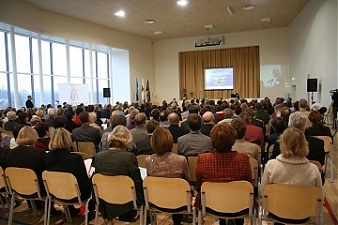Analytics, Education and Science, Estonia, EU – Baltic States
International Internet Magazine. Baltic States news & analytics
Thursday, 25.04.2024, 03:18
OECD: Vocational education popular among people older than 25 in Estonia
 Print version
Print version |
|---|
In 2018, 40% of all students at the secondary level, that is
upper secondary, vocational and level 4 vocational training students, were in
vocational education, which is comparable to the OECD average at 42%,
spokespeople for the Ministry of Education and Research said. The average age
of students in vocational education in Estonia is 24, compared to 18 in general
upper secondary education.
In vocational education, the most popular specialties are
engineering, production and construction, which 50% of all vocational students
study, followed by service curricula, in which 28% of vocational students are
enrolled. ICT curricula are more popular in Estonia than in the OECD on
average: 12% here compared to 4% in other countries.
Work-based learning is growing in popularity in Estonia,
involving 6% of all vocational students at the upper secondary level. However,
a comparison of countries shows that there remains a lot of room for
improvement in this regard, with the OECD average being 34%.
Robert Lippin, deputy secretary general of vocational
education, adult education and school network at the Ministry of Education and
Research, said Estonia can be proud of the fact that education at all levels is
accessible to everyone in the country.
"Students are able to acquire both vocational and
higher education completely free of charge," he explained. "That's
without doubt one of the reasons for the success of lifelong learning, since it
means that even the likes of older people with higher education can enroll in
vocational school. It's difficult to overplay the importance of lifelong
learning in the world today. It's the key to success of every single person and
the economy as a whole."
Lippin emphasized that while accessibility is important, it
is also vital to increase young people's interest in vocational education and
to reduce the number of dropouts.
In 2019, the employment opportunities enjoyed by vocational
training graduates aged 25-34 were equal to those of young people with general
upper secondary education, which is exceptional in OECD countries.
Whereas the ratio of students to teachers is similar in both
vocational and general education at the upper secondary level in OECD
countries, in Estonia there are 14 students to every member of teaching staff
in general upper secondary education and 18 in vocational education. The percentage
of female teachers is higher overall in both vocational and general upper
secondary education, but there are more male teachers in vocational education
-- 40% compared to 23% in general upper secondary education.
Compared to the OECD average, classes in general education
are smaller in Estonia. This is considered a strength of the education system,
which also became clear during the spring of COVID-19.
Among other things, the OECD has pointed out that as in
other OECD countries, investments per student are higher in Estonia in
vocational education than they are in general upper secondary education. At the
same time, the total investment in the education system per student remains
below the OECD average. Estonia is nevertheless moving in the right direction,
with funding for education increasing by an average of 2.5% per student from
basic to higher education between 2012 and 2017.
Education at a Glance is one of the main and also one of the
largest collections of educational statistics available. It is designed to
provide countries with an opportunity to compare and contrast the impact of
their educational policies. The collection analyzes the education systems of 36
OECD member states and partner countries.
- 26.08.2021 LLC Dizozols Investments finalizes investment attraction deal with Crowdestor with record-high profits
- 30.12.2020 Business Education Plus предлагает анонсы бизнес-обучений в январе-феврале 2021 года
- 30.12.2020 Hotels showing strong interest in providing self-isolation service
- 30.12.2020 EU to buy additional 100 mln doses of coronavirus vaccine
- 30.12.2020 ЕС закупит 100 млн. дополнительных доз вакцины Biontech и Pfizer
- 29.12.2020 В Латвии вводят комендантский час, ЧС продлена до 7 февраля
- 29.12.2020 Latvia to impose curfew, state of emergency to be extended until February 7
- 29.12.2020 Linde Gas открывает завод в Кедайняйской СЭЗ
- 29.12.2020 В Риге можно изолироваться в трех гостиницах
- 29.12.2020 18-19 января Наталия Сафонова проводит семинар "Управленческий учет во власти собственника"








 «The Baltic Course» Is Sold and Stays in Business!
«The Baltic Course» Is Sold and Stays in Business!

